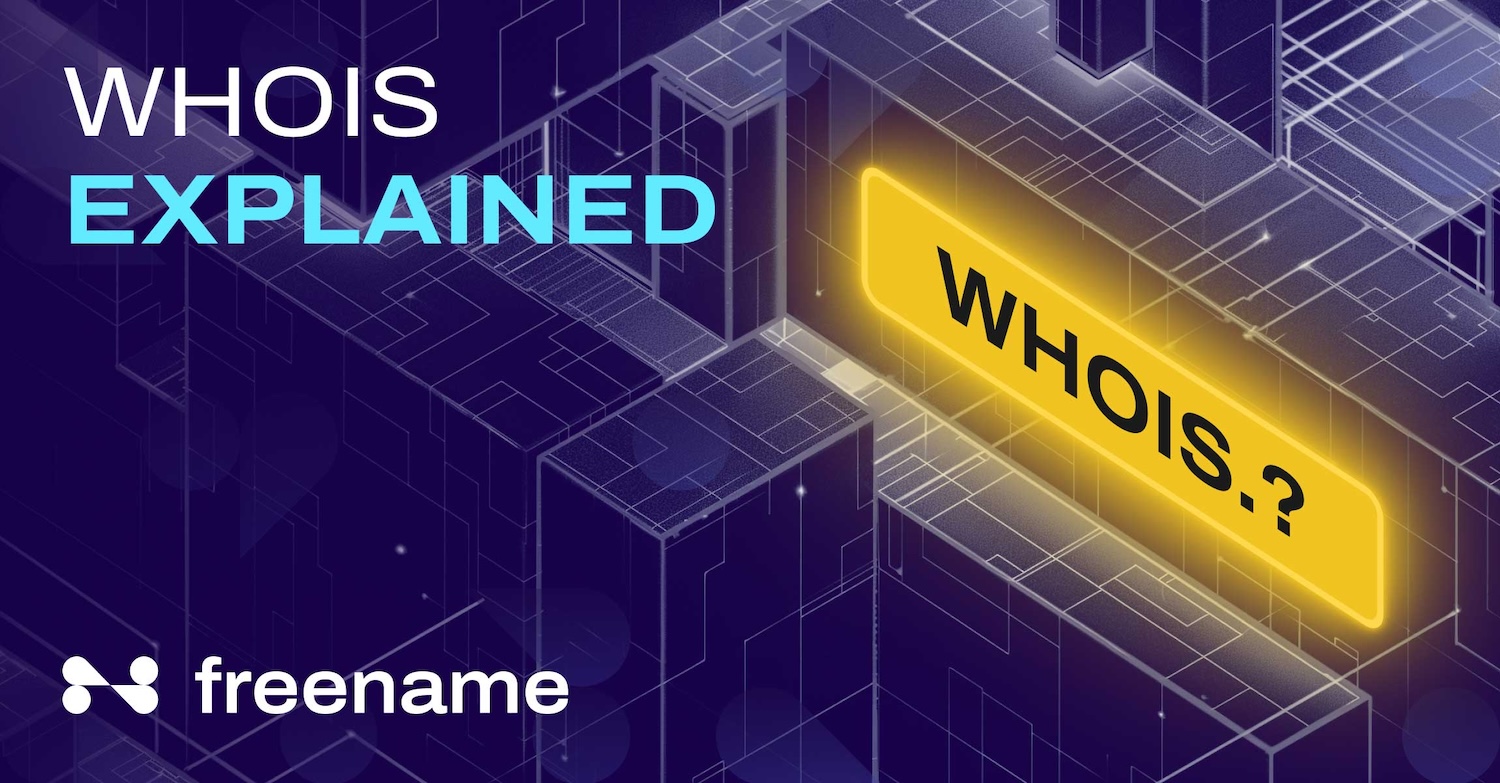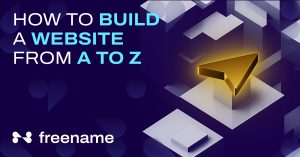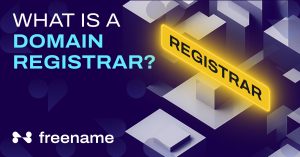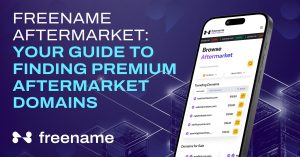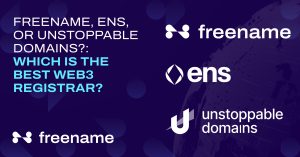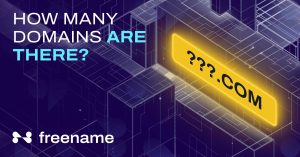WHOIS: The Most Complete Web3 Domain/TLD Ownership Tool
Domains are digital identities; by default, everyone has the right to know who they belong to. The protocol that helps you find that information is called WHOIS. It is a public database with essential information about a registered domain, proving vital for domain management.
Whether you want to buy a domain that matches your business name or check if anyone is misusing your trademark, WHOIS is the first step to getting started.
As we transition into the decentralized web, WHOIS becomes more critical. It helps you validate an online transaction, providing you with the whereabouts of a Web3 domain you’re dealing with.
This article explores the significance of WHOIS with respect to domain management, including Web3 domains. We’ll uncover its unique features, benefits, and importance in trademark protection.
What Is WHOIS?
When a domain is bought, it is registered in a database so interested parties can see the basic information about the owner. The protocol that stores this information is known as WHOIS. Whenever a new domain is registered, or someone updates their DNS, WHOIS collects it.
WHOIS is controlled by the Internet Corporation of Assigned Names and Numbers (ICANN). ICANN offers a Registration Data Lookup Tool or directory that shares information about a specific domain, including the owner’s personal information and some technical information worth sharing.
This domain lookup protocol helps to democratize the internet, ensuring everyone can access it to know who is behind a specific domain. So, in a way, WHOIS is not just a database; it can also help you explore business opportunities.
WHOIS Functionality
On the traditional web, WHOIS registration data is stored in multiple locations. Moreover, this data is managed by different registries and registrars.
- Domain registries own and manage domain extensions
- Registrars are authorized to sell and register these domains.
So, when you lookup for a particular domain, WHOIS collects all the relevant information from these locations and presents it to you. Normally, you get the following information:
- Domain owner’s name
- Contact detail
- Domain’s registration date
- Expiration date, etc.
Do WHOIS functionalities remain the same in the Web3 context? Let’s find out.
How WHOIS Differs in the Web3 Context
In the traditional webspace, a domain’s ownership and control isn’t solely assigned to its true owner. Registries and registrars share these responsibilities with domain owners. However, in the decentralized web, things work differently.
The decentralized web transfers complete control and ownership to the domain owner. Once the ownership is transferred, a Web3 registrar keeps a record of it. Also, the information about domain registration is stored in blockchain ledgers.
Attributes like decentralization, enhanced security, privacy and transparency impact the role of WHOIS. Primarily, an ideal Web3 WHOIS should be compatible with major blockchain networks to query a maximum number of digital wallets and registries. The purpose is to provide end users with as accurate information as possible.
Moreover, it must provide sufficient information to the domain seekers to:
- Help them make an informed decision
- Conceal existing domain owner’s information that they may not wish to share.
Additionally, an ideal Web3 WHOIS should be able to tell whether a particular digital wallet is linked to a domain since many cryptocurrency wallets still function independently.
The Role of Web3 Domains
Domains like .crypto, .eth, .freename belong to the Web3 ecosystem. What makes them more significant than traditional domains is that they’re not just website addresses. They are attached to users’ important digital assets, such as crypto wallets, NFT collections, or other assets.
Basic Purposes
Web3 domains are crucial for your online presence in the decentralized web sphere. Here’s why:
- Web3 domains are linked to your blockchain-based identity (crypto wallets, NFTs, Metaverse assets, etc.), making it easier for other users to find you.
- They can help you send or receive cryptocurrencies
- You can build a decentralized website (DeFi apps, games, NFT collection) using your Web3 domain
- A Web3 domain can be used to send or receive emails with end-to-end encryption, preventing reliance on centralized email servers.
- You can even use a Web3 domain as your digital signature for smart contracts.
Why Web3 Domains Matter
Managing your emails, digital currencies, collaboration tools, and other apps can be hectic. For example, several apps may require you to log in separately by providing a username and password.
Did you know you can use a single name as your universal username, cryptocurrency wallet identifier, website address, and even email address?
A single decentralized domain will be sufficient to manage almost every online activity. It consolidates your digital presence under one recognizable name. This dynamic ability attracts businesses and individuals to adopt the decentralized web at a rapid pace.
Growth and Adoption
Although the Web3 ecosystem is in its initial phase, it still shows an immaculate growth potential.
TLDs like .crypto, .gaming, .eth, and others have become increasingly popular, securing mainstream spots. And it’s not just about novelty; it’s about:
- Complete asset ownership
- Control and integrity of your digital identity
- Securing a place in the next generation of the internet
Due to these reasons, the decentralized web has grown by 137% in 2021, garnering trillions of dollars in multiple sectors. But this is just the beginning.
Polaris Market Research report speculates that the global market size of the decentralized web will surpass USD 49 billion by 2032. These stats reflect the importance of Web3 domains for brands’ sustainable future.
If you’re convinced, you should be using Freename’s WHOIS explorer, which will help you find the best Web3 domain for your brand.
Features of Freename’s WHOIS Explorer
Aligned with the requirements of the decentralized web, Freename’s WHOIS Explorer is more than just a domain lookup tool. If you’re looking for a comprehensive solution for Web3 domain management, this is your best bet!
Detailed Search Capabilities
Ideally, one would want the WHOIS search tool to furnish detailed information about the domains before buying them. You can utilize Freename Web3 WHOIS to know everything to reach your decision quickly:
- It provides the ownership information of any Web3 domain you have in mind.
- You can type the wallet address and learn about the linked Web3 domains.
- You can find the whereabouts of any Web3 TLD and determine whether it is registered.
The Freename WHOIS lets you quickly verify the ownership of any domain before placing your bid online.
Domain Ownership and Wallet Addresses
One of the advantages of the Freename WHOIS Explorer is its ability to search Web3 domains linked to a particular blockchain wallet. You can easily verify the wallet owner’s legitimacy. This information will help those involved in:
- Cryptocurrency transactions, or
- Smart contracts.
Integration with Major Platforms
Freename’s WHOIS Explorer is integrated with popular blockchain networks like Polygon, Aurora, Cronos, BSC, BASE, Solana, etc. It also deals with different Web3 domains, such as Freename domains, ENS (Ethereum Name Service) domains, and Unstoppable Domains.
With Freename WHOIS domain search, you have a massive pool to locate your desired domain or wallet address. How about that for a seamless experience?
Benefits of Using WHOIS
WHOIS offers multiple benefits to the users, including security, transparency, and due diligence.
Enhancing Security and Transparency
WHOIS enables you to verify domain ownership, helping you build trust in the Web3 space. It helps developers, domain investors, and other Web3 users to learn who owns a domain, ensuring legitimacy.
Due Diligence for Domain Transactions
Web3 domain names carry significant value. So, due diligence is pivotal. With WHOIS, you can determine whether the person claiming a specific domain is the rightful owner.
Combating Scams
Sometimes, similarity in domain names can pose a problem for domain owners. You can utilize WHOIS to determine domain names similar to your domain name, especially those potentially threatening.
Leveraging WHOIS for Trademark Protection
Considering a massive pool of TLDs and domains, trademark protection in Web3 has become more critical than ever. Unauthorized use of your domain name or logo can lead to multiple issues, such as:
- Confusion among customers
- Loss of revenue
- (Worst case) damage your brand’s reputation.
To combat similar domain name threats, think about protecting your Web3 domains. Protected domains bear trademark protection. A trademark protects your brand name from scammers and authorizes you to take legal action against the impersonator.
So, what’s the role of WHOIS in trademark protection? In simple words, WHOIS is your first step to combat trademark-related scams.
Steps to Take if Unauthorized Use is Detected
- Step 1: Use the WHOIS Explorer to discover if someone is using a similar Web3 domain. Then, you can contact them directly to resolve the dispute.
- Step 2: You can leverage the Uniform Domain-Name Dispute-Resolution Policy (UDRP) that oversees such issues.
- Step 2: Contact the World Intellectual Property Organization (WIPO), which follows ICANN’s introduced UDRP standards for settling domain name disputes.
- Step 3: Follow WIPO’s guidelines to prepare and submit your application. The application must stipulate the number of panel members to review the dispute.
- Step 4: WIPO will review your case and notify the respondent (the other party) to submit their response in a stipulated time period.
- Step 5: The panel will examine your application and response closely and notify WIPO of their decision.
- Step 6: WIPO will notify the ICANN-accredited domain registrar to take further action. Either the domain will be deactivated or allotted to the trademark holder.
Conclusion
WHOIS is primarily a domain lookup protocol controlled by ICANN. It helps find the source behind a specific domain, which is helpful for domain investors, businesses, law enforcement, and others.
Although the Web3 era brings enhanced security, brand integrity, and complete digital autonomy, WHOIS remains vital for managing one’s online presence. For example, the Freename WHOIS is the first ever Web3 WHOIS that ensures legitimacy, transparency, and security.
It lets you manage your Web3 domains linked to your digital assets. It gives you substantial first-hand information about any Web3 domain you want to buy and allows you to protect your brand name from cybersquatting or other trademark-related issues.
You can trust Freename’s WHOIS because it offers all relevant historical data related to any Web3 domain or TLD. Freename WHOIS Explorer is compatible with many popular blockchain networks, hence the most comprehensive domain locator on the market.

